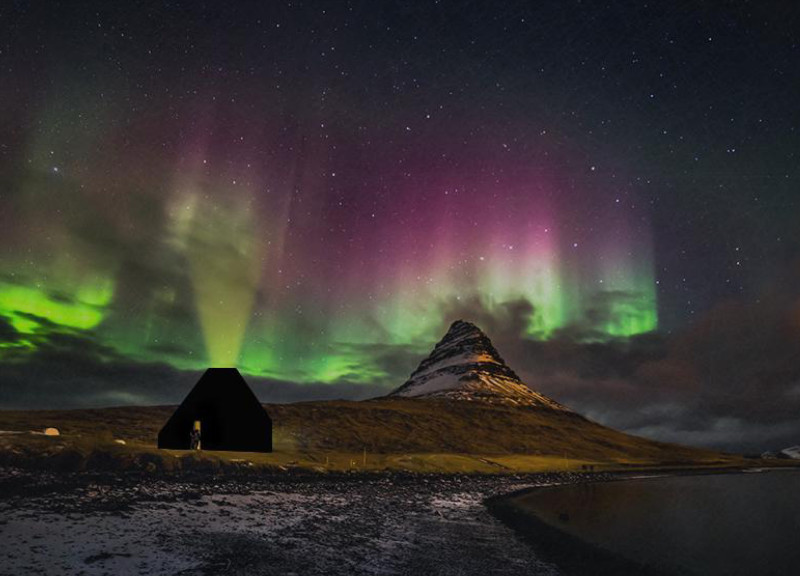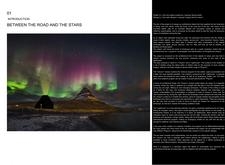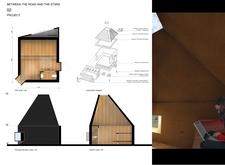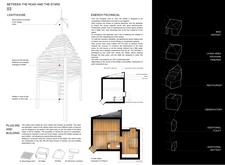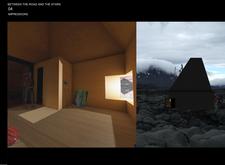5 key facts about this project
### Project Overview
Located in Iceland's rugged terrain, the project "Between the Road and the Stars" is designed to serve as a shelter for hikers while engaging with the distinctive topography and celestial features of the area. The design integrates two primary components: the "Volcano," providing a rest area, and the "Lighthouse," functioning as an observatory and energy source. The intent is to create a refuge that facilitates a connection between human exploration and the preservation of nature, enhancing the experience of both the landscape and the night sky.
### Spatial Strategy and Architectural Form
The architectural arrangement emphasizes both functionality and aesthetic engagement with the surrounding environment. The "Volcano" structure features a dynamic geometry that reflects the volcanic formations of the region, encouraging a dialogue with the landscape. Large windows promote panoramic views and allow for ample natural light within the shelter, creating an inviting atmosphere. Conversely, the "Lighthouse" adopts a tiered design to enhance visibility and serve as a prominent observational point, fostering a connection with celestial elements.
### Material Selection and Sustainability
The construction materials were chosen to ensure sustainability while resonating with the local context. Key components include:
- **Wood**: Used in the structural framework and interior finishes, providing warmth and a tactile relationship with the environment.
- **Metal Sheet**: Utilized for the roofing, this material offers durability suitable for Iceland's harsh weather and provides a visual contrast to the wooden elements.
- **Basalt Aggregate**: Sourced locally, this material ensures structural integrity while maintaining a reduced ecological footprint.
- **Insulation Materials**: Strategically positioned within walls and roofs, these materials enhance thermal efficiency, ensuring comfort throughout varying weather conditions.
- **Adjustable Pods**: This modular construction approach allows for design flexibility and potential adaptive reuse, accommodating site-specific needs and evolving functions.
Incorporating renewable energy solutions such as wind turbines not only promotes sustainability but also adds practical value, enabling the project to stand resilient in a remote setting. The design also features practical elements like emergency services, enhancing safety and preparedness for users in the wild.


